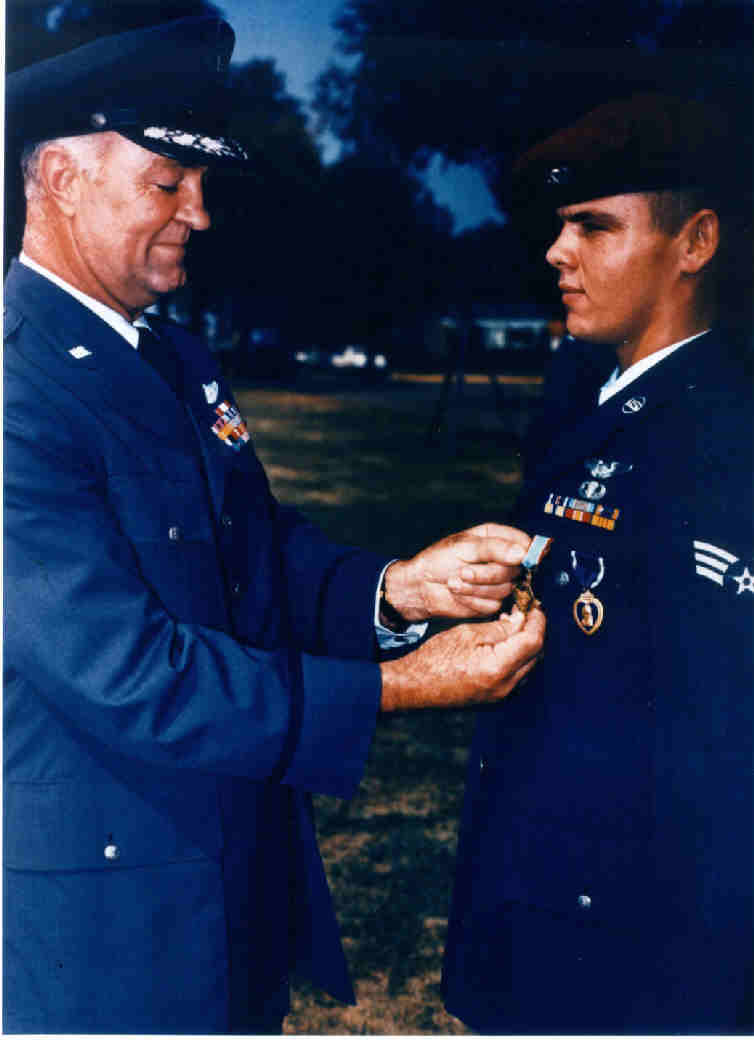
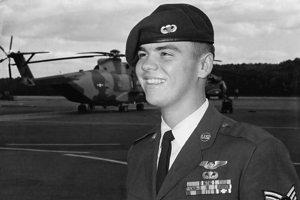 6 February 1967: That Others May Live. Airman 2nd Class Duane D. Hackney, U.S. Air Force, 37th Aerospace Rescue and Recovery Squadron, rescued the pilot of a downed aircraft and earned the Air Force Cross. He was the first living enlisted recipient of the Air Force Cross.
6 February 1967: That Others May Live. Airman 2nd Class Duane D. Hackney, U.S. Air Force, 37th Aerospace Rescue and Recovery Squadron, rescued the pilot of a downed aircraft and earned the Air Force Cross. He was the first living enlisted recipient of the Air Force Cross.
With more than 70 individual medals, Chief Master Sergeant Hackney was the most highly decorated enlisted man in United States Air Force history.
His citation reads:
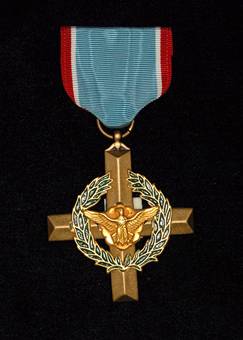
“The President of the United States of America, authorized by Title 10, Section 8742, United States Code, takes pleasure in presenting the Air Force Cross to Airman Second Class Duane D. Hackney (AFSN: 16827003), United States Air Force, for extraordinary heroism in military operations against an opposing armed force while serving with the 37th Aerospace Rescue and Recovery Squadron, 3d Air Rescue and Recovery Group, DaNang Air Base, Vietnam, as a Paramedic (Pararescueman) on an unarmed HH-3E Rescue Helicopter near Mu Gia Pass, North Vietnam, on 6 February 1967. On that date, Airman Hackney flew two sorties in a heavily defended hostile area. On the first sortie, despite the presence of armed forces known to be hostile, entrenched in the vicinity, Airman Hackney volunteered to be lowered into the jungle to search for the survivor. He searched until the controlling Search and Rescue agency ordered an evacuation of the rescue crew. On the second sortie, Airman Hackney located the downed pilot, who was hoisted into the helicopter. As the rescue crew departed the area, intense and accurate 37-mm. flak tore into the helicopter amidships, causing extensive damage and a raging fire aboard the craft. With complete disregard for his own safety, Airman Hackney fitted his parachute to the rescued man. In this moment of impending disaster, Airman Hackney chose to place his responsibility to the survivor above his own life. The courageous Pararescueman located another parachute for himself and had just slipped his arms through the harness when a second 37-mm. round struck the crippled aircraft, sending it out of control. The force of the explosion blew Airman Hackney through the open cargo door and, though stunned, he managed to deploy the unbuckled parachute and make a successful landing. He was later recovered by a companion helicopter. Through his extraordinary heroism, superb airmanship, and aggressiveness in the face of hostile forces, Airman Hackney reflected the highest credit upon himself and the United States Air Force.”
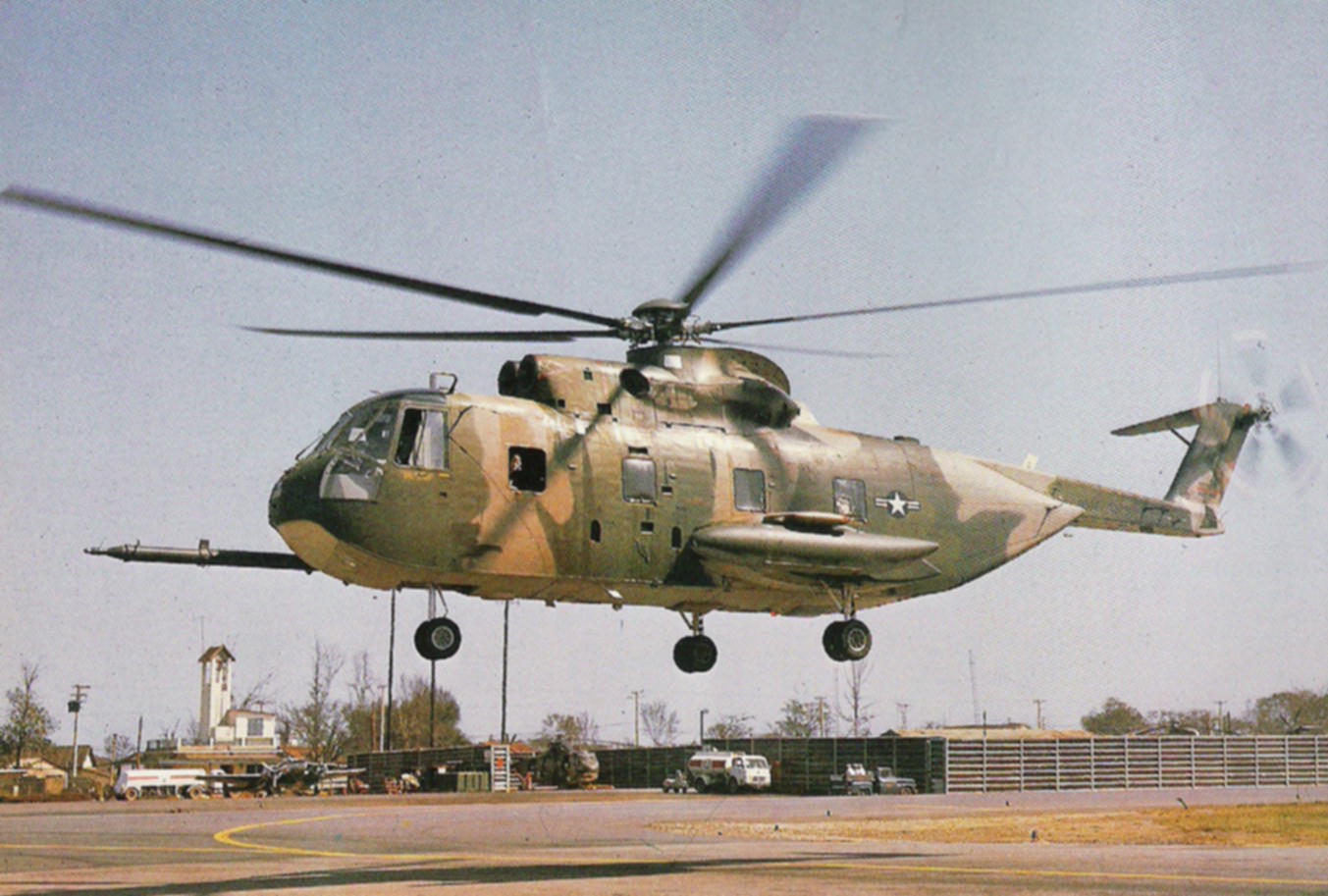
The following is excerpted from Chief Master Sergeant Hackney’s U.S. Air Force biography:
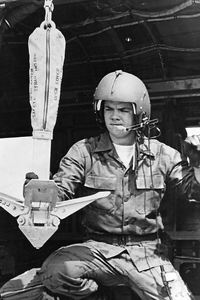
“. . . His pararescue career began quickly. Three days after reporting for duty, Hackney, now an airman second class, flew his first combat mission. On his 10th mission, in April 1966, he was hit by enemy fire while pulling a wounded Marine pilot aboard his HH-3E Jolly Green Giant. Five times in the months ahead his helicopter was shot down. He earned four Distinguished Flying Crosses and 18 Air Medals for single acts of heroism. Then came Feb. 6, 1967 and the mission that would lead to the second highest award for heroism given by the U.S. Air Force.
“That morning he descended from his HH-3E to look for a downed pilot near Mu Gia pass, North Vietnam. He searched for two hours until bad weather forced a return to base. A few hours later, radio contact with the pilot was re-established and another rescue was attempted. This time, the severely wounded pilot was found. The wounded pilot hugged Hackney and said, ‘You’re beautiful.’
” ‘Hey man,’ said Hackney, ‘I’m not the stewardess.’
“Hackney carried the pilot back to the helicopter to begin their retreat. They had to hurry because it was rapidly becoming dark. Before they could clear enemy air space, anti-aircraft artillery struck the helicopter, filling the compartment with smoke and fire. Hackney strapped his own parachute on the pilot’s back and helped him get out the door. He found a spare, oil-stained parachute just as a second 37-mm antiaircraft shell ripped into the helicopter. Before he could buckle the chute, the Jolly Green Giant’s fuel line exploded, blasting Hackney through the door. Holding on to the chute with his arms, he managed to pull the cord before plummeting into the forest 250 feet below. The chute slowed his fall, but he still plunged 80 more feet to a rock ledge.
“Severely burned and pierced by shrapnel, Hackney managed to evade capture. When an A-1 Skyraider passed overhead, he fired a flare. A chopper mission was sent in and the rescuer was rescued. When he got back to Da Nang Air Base, he was told that he was the only survivor of the thwarted mission. Four other crew members and the pilot they had gone to save had died.
“For giving up his parachute and risking his own life, Hackney received the Air Force Cross. Hackney was presented the medal by Gen. Howell M. Estes Jr., the commander of Military Airlift Command.
“Hackney continued his distinguished Air Force career, retiring in 1991 as a chief master sergeant. In 1993, he died of a heart attack in his Pennsylvania home. He was 46 years old.”
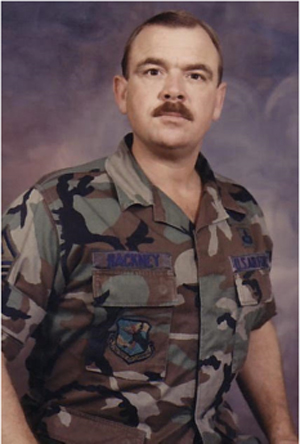
© 2020, Bryan R. Swopes
This commentary doesn’t even come close to the distinguished career Duane had. He actuallly had gotten out of the Air Force and was a police officer (Narc) in the Detroit area. He told me that it was safer in the Air Force than it was in Detroit, so he came back in, lost a stripe coming back in, but still made it to CMSgt
I’m sorry. I did the best I could with the information that was available.
Sir,
You wrote a wonderful article that made us see the true hero that
CMSGT Hackney was. You honored his selfless service. Thank you.
Thank you. “This Day in Aviation” is about aircraft and historic events, but, ultimately, it is about people. without question, Duane Hackney qualifies to be called a Hero.
Thanks for reminding us of a true hero.
Bryan, truly a great write up of Duane and his service to the Air Force. I had not heard of him, his bravery and heroism!! Thanks for sharing. God bless!
Thank you, Dan.
Its. His. Call. Too do. What. Needed. To. Do. . at. Hot. Time. Saving. Our. People. To. Give. USA. What. It is. He. Was. Min. MAN.
Request permission to reprint your article in the VHCMA Newsletter (Vietnam Helicopter Crew Members Assoc).
Of course, credit will be given to you.
Please do, John. Thank you. —Bryan 🙂
Bryan-
Please contact me regarding Duane Hackney’s mission. I can be reached at 937-371-3643 or [email protected]
Thank you!
Phil
Will do.
I was stationed with Duane at Hamilton AFB and we went to Guam together to establish a Local Base Rescue (LBR) on HH-43s to cover B-52 flights. This was in 1969/70. Duane was an exceptional human being!
Met Duane when he came to Eglin where I was going through finishing school. Did not get to know him well, but was greatly inspired by his dedication and devotion That Others May Live. Was surprised to see that this particular mission took place on my birthday 6, Feb, 67. I was 21. Thanks for the story…
Shocked by the aggressive tone of Mr Adrian’s comments. Obviously this person thinks he is better than us ordinary folks. What a shame. Thank you Bryan for a job well done.
I second that remark. TDiA is a very well researched source of aviation history. Thank you Mr Swopes for your dedication and effort.
Thank you. I very much appreciate your compliments.
Bryan,
Another great write up.
I was saddened by the end result of the rescue, but glad CMS Hackney went on to have a great career.
Then I was saddened again to find that he passed at such a young age.
As always I enjoy your prose.
Thank you very much, Ed.
Marc, John Adrian wasn’t being aggressive I’m, he was stating fact. I served with Duane in both Korea and Vietnam. Duane Hackney on another mission wore one of the first ceramic helmets, stuck his head out the window and promptly bounced a bullet off it. On a subsequent mission a few years later (1971) he had decided that the ceramic helmet was too hot and heavy, and wore his fiberglass helmet. After flying orbits over Loas, they had a mission to pick up another pilot, went into a hover, and received gunfire. Airman Petty was hit in the arm badly, and Hackney and Peckeraro treated him on their way back to DaNang. It was only after returning that Hackney noticed he also had been hit, as a bullet had come inside his helmet, nicked either his scalp or ear (‘can’t remember which) and exited through the fiberglass rear of the helmet. We felt he had a charmed life. I have photos of him landing and assisting Petty off the HH-53C Super Jolly Green Giant helicopter (received the negatives from a pilot who took them, and made enlargements, as I was on leave to Korea at that time). By the way, John Adrian is in bad shape right now from cancer and could really use some prayers.
John Adrian was not being
rude or condescending. John’s experience with the Special Ops community is VAST, same within the ARRS. Maybe consider that your high brow view of things is uncalled for, Sir. John was merely attempting to pay additional homage to a friend and brother. “Little John” is a hero to those of us in the community who know him & his knowledge of the people and aircraft associated with the Pony Express, Pedro’s, and the modern 20th SOS is staggering. He has been a Brother to this community since Vietnam. John is also currently in final stage of his cancer now, is heavily medicated due to unbearable pain, likely an end result of his service to his Nation. Moral of the story fellas, STFU if you don’t know the whole story, you sound like old women who haven’t seen or done anywhere near what this man has.
Most people would be amazed at the things airmen did in SEA in both rescue and special ops. Duane was one of the best of the best hands down. Nice guy to boot. ???????????
I served with Dwayne at DaNang in 68. He was an exceptional PJ and friend. He had a twin sister who lived in my hometown and I visited her a few times. She didnt believe I was real when I first contacted her, thought it was a hoax! I went to meet her in person and then she believd me!
Just to be correct for history’s sake: “A recipient of the Air Force Cross, he was the first living enlisted man to receive the medal, and at the time of its award he was its youngest recipient.”
Brig. Gen. James Robinson “Robbie” Risner was the ‘first’ recipient of the Air Force Cross.
Thank you for the correction.
Robbie may have been the first LIVING recipient of the AF Cross and he was a double recipient of the medal, but Rudy Anderson, who was shot down in a U-2 over Cuba during the CMC was the first recipient of the AF Cross.
Thank you, High. He will be on my “to do” list.